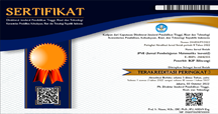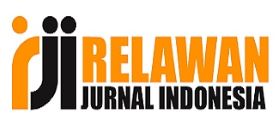PENDEKATAN INKUIRI BERBASIS ETNOMATEMATIKA: ANALISIS KEMAMPUAN BERPIKIR KREATIF MATERI BANGUN DATAR
DOI:
https://doi.org/10.22460/jpmi.v6i1.14383Keywords:
Creative thinking, Inquiry Approach, Ethnomathematics, Two-Dimensional FigureAbstract
Creative thinking is one of the most important aspects of learning, with creative thinking students can develop their abilities in every material being taught. This study aims to describe students' creative thinking skills in learning using an ethnomathematical-based inquiry learning model on two-dimensional figure. This research is a qualitative descriptive study. The subjects of this study were 9th grade students of junior high school, which amounted to 15 people. Data collection techniques used in the form of test-based interviews and questionnaires. The data obtained were then analyzed using data analysis techniques with the stages of condensing data, data display, and conclusions drawing. The results showed that each group had different levels of creative thinking ability. The results of this study indicate that each group has a different level of creative thinking ability. There are two groups that have the ability to think creatively at level 3 (creative) which is indicated by the fulfillment of two components of creative thinking ability, namely fluency and flexibility. Meanwhile, one other group has a level of creative thinking ability in the quite creative category (level 2) which only fulfills one component of creative thinking ability, namely flexibility.
References
Amelia, R. (2015). Pencapaian Kemampuan Penalaran Matematis Siswa SMP dengan Menggunakan Metode Pembelajaran Inkuiri Terbimbing. P2M STKIP Siliwangi, 2(1), 98–105.
Amidi, & Zahid, M. Z. (2016). Membangun Kemampuan Berpikir Kreatif Matematis dengan Model Pembelajaran Berbasis Masalah Berbantuan E-Learning. Seminar Nasional Matematika X Universitas Negeri Semarang 2016, 586–594.
Choeriyah, L., Qohar, A., & Subanji, S. (2021). Student Creative Thinking Analysis in Ethnomathematics Based Inquiry Learning on Transformation Materials. EDUTEC : Journal of Education And Technology, 4(4), 585–597. https://doi.org/10.29062/edu.v4i4.218
Fritzlar, T., Kotters, M., & Richter, K. (2017). Mathematics from Old Times and Foreign Countries – Encouraging Mathematical Creativity of Primary Students through Ethnomathematics (D. Pitta (ed.)). Department of Education, University of Cyprus.
Hanan, F., & Agoestanto, A. (2022). Development of STEM-Based Learning Tools to Increase Students ’ Mathematical Creative Thinking Ability through Inquiry Learning. 6927(1), 21–30. https://doi.org/10.15294/ujme.v11i1.55842
Handayani, U. F., Sa’dijah, C., & Susanto, H. (2018). Analisis Kemampuan Berpikir Kreatif Matematis Siswa SMP dalam Menyelesaikan Soal Adopsi ‘PISA.’ Jurnal Math Educator Nusantara: Wahana Publikasi Karya Tulis Ilmiah Di Bidang Pendidikan Matematika, 4(2), 143–156. https://doi.org/10.29407/jmen.v4i2.12109
Hasibuan, I. S., & Amry, Z. (2017). Differences of Students Mathematical Communication Ability Between Problems Based Learning, Realistic Mathematical Education and Inquiri Learning in SMP Negeri 1 Labuhan Deli. IOSR Journal of Research & Method in Education (IOSR-JRME), 7(6), 54–60. https://doi.org/10.9790/7388-0706015460
Herdani, P. D., & Ratu, N. (2018). Analisis Tingkat Kemampuan Berpikir Kreatif Matematis Siswa SMP dalam Menyelesaikan Open-Ended Problem Pada Materi Bangun Datar Segi Empat. 2(1), 9–16.
Heriyanto, D. (2020). Analisis Kemampuan Berpikir Kreatif Siswa Sekolah Menengah Pertama. PRISMA, Prosiding Seminar Nasional Matematika, 3, 587–590.
Kehi, Y. J., M, Z., & Waluya, S. B. (2019). Kontribusi Etnomatematika Sebagai Masalah Kontekstual dalam Mengembangkan Literasi Matematika. Prisma, Prosiding Seminar Nasional Matematika, 2, 190–196.
Khairunnisa, & Ramlah. (2021). Aktivitas Pemecahan Masalah Siswa dalam Mengerjakan Soal PISA ditinjau Berdasarkan Tahapan Polya. Jurnal Pembelajaran Matematika Inovatif, 4(2), 445–452. https://doi.org/10.22460/jpmi.v4i2.445-452
Lisliana, L., Hartoyo, A., & Bistari, B. (2016). Analisis Kemampuan Berpikir Kreatif Siswa dalam Menyelesaikan Masalah pada Materi Segitiga di SMP. Khatulistiwa: Jurnal Pendidikan Dan Pembelajaran, 5(1), 1–11. https://jurnal.untan.ac.id/index.php/jpdpb/article/view/17409
Novitasari, N., Febriyanti, R., & Wulandari, I. A. (2022). Efektivitas LKS Berbasis Etnomatematika dengan Pendekatan STEM terhadap Kemampuan Berpikir Kritis. Vygotsky: Jurnal Pendidikan Matematika Dan Matematika, 4(1), 57–66.
Ogunkunle, R. A., Harcourt, P., Harcourt, P., George, N. R., & Ed, M. (2015). Integrating Ethnomathematics Into Secondary School Mathematics Curriculum for Effective Artisan Creative Skill Development. European Scientific Journal, 11(3), 386–397.
Purwanto, W. R. (2019). Proses Berpikir Siswa dalam Memecahkan Masalah Matematika Ditinjau dari Perspektif Gender. Prosiding Seminar Nasional Pascasarjana UNNES, 895–900.
Rosa, M., & Orey, D. C. (2011). Ethnomathematics : The Cultural Aspects of Mathematics. Revista Latinoamericana de Etnomatemática, 4(2), 32–54.
Siswono, T. Y. E. (2016). Berpikir Kritis dan Berpikir Kreatif sebagai Fokus Pembelajaran Matematika. Seminar Nasional Matematika Dan Pendidikan Matematika (Senatik 1), 11–26.
Suherman, S., & Vidákovich, T. (2022). Assessment of mathematical creative thinking : A systematic review. 44, 1–13. https://doi.org/10.1016/j.tsc.2022.101019
Suherman, S., Vidákovich, T., & Komarudin, K. (2021). STEM-E: Fostering Mathematical Creative Thinking Ability in The 21st Century. Journal of Physics: Conference Series, 1882(1), 1–11. https://doi.org/10.1088/1742-6596/1882/1/012164
Sutrimo, S., Kamid, K., & Saharudin, S. (2019). LKPD Bermuatan Inquiry dan Budaya Jambi : Efektivitas dalam Meningkatkan Kemampuan Berpikir Kreatif Matematis. 2(1), 29–36.

















